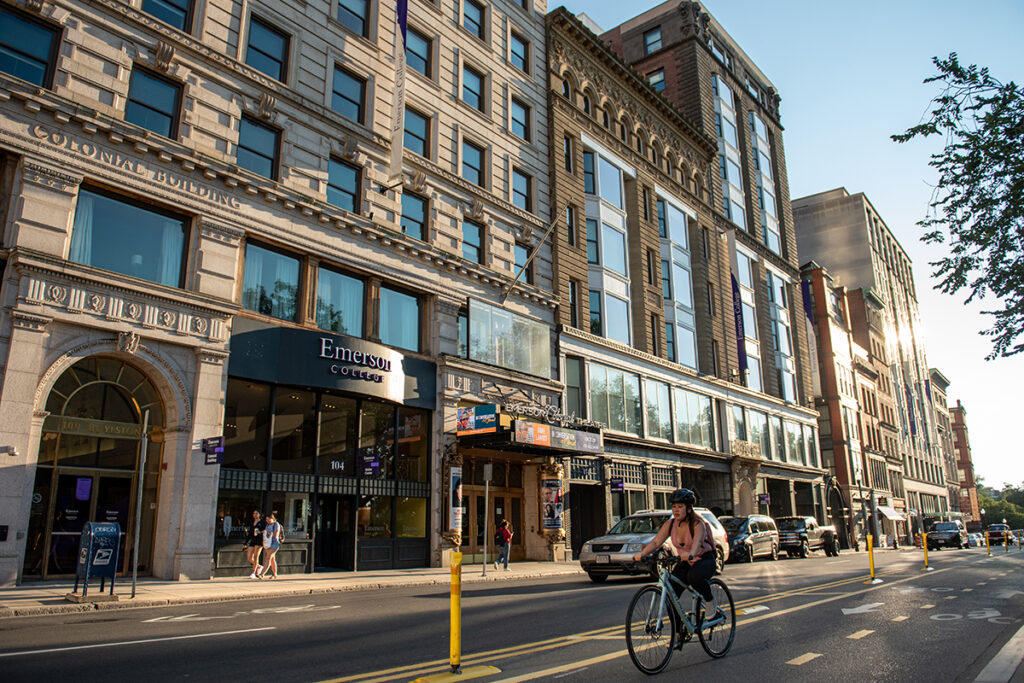Strategic Planning Process Needs Your Input

Planning is underway for a strategic plan that will guide Emerson to its 150th anniversary in 2030, and the College needs your input.
The process is being driven by a steering committee comprising faculty, staff, administrators, and students, with the help of Huron Consulting Group, but the plan will be informed and shaped by everyone in the Emerson community who takes the time to fill out an online feedback form or responds to forthcoming survey going out to students, faculty, and staff.
“The ultimate goal with strategic planning processes is to determine priorities,” said Jim Hoppe, Vice President and Dean for Campus Life and Strategic Planning Steering Committee Co-Chair, “It’s a guide to help folks kind of make sure we’re all rolling together in the same direction, to achieve this greater vision.”
It’s still very early in the planning process, which began in earnest in December 2023 and is expected to be finalized by December 2024, but the gathering of feedback has already begun, said Interim School of the Arts Dean and Steering Committee Co-Chair Maria Koundoura.
Huron Consulting has interviewed around 30 individual stakeholders, names suggested by the steering committee. Next, Huron will meet with focus groups from across the College community and beyond to hear their thoughts on what Emerson’s priorities and vision should be.
If you study, teach, or work at Emerson, you’ll soon receive a survey asking for feedback, but you don’t need to wait until then to voice your opinions. An online form is available now – and will be throughout the process – that allows you to share your thoughts anonymously and directly with Huron.
“[Huron looks] at the main themes gathers them … specific points that are coming up repeatedly,” and presents them regularly to the steering committee and the Executive Committee (made up of President Jay Bernhardt, Chief of Staff Melissa Richards, Interim Provost Jan Roberts-Breslin, and Chief Financial Officer Paul Dworkis), Koundoura said.
The community also will receive updates at Town Hall meetings and other engagement opportunities throughout the year as the committees begin homing in on priorities.
Robin Van Impe, MA ‘24, graduate student representative on the steering committee, said students should get involved in the campus community in any way they can, including expressing their opinions about the College’s priorities.
“If no one speaks up about what’s going wrong or what could go better, nothing will ever change,” she said. “Something as simple as a survey or a meeting may seem trivial, but it helps us a lot in determining what’s needed.”
The broad perspectives shared by people throughout the Emerson community, as well as partners in the wider community, should create a “truly unifying plan,” said Jennifer Lamy, Associate Director of Sustainability and a member of the Strategic Planning Steering Committee. “The more input we get, the better the final result will be. I urge everyone to participate in interviews and focus groups and to submit their thoughts to the feedback form available online.”
The last strategic plan was created over a decade ago, under then-President Lee Pelton. A fresh planning process was delayed, first by the pandemic, and then in anticipation of the arrival of a new president.
Koundoura said we can’t know yet how different from or similar to the last strategic plan this new one will be, but she referred to the Greek philosopher Heraclitus, who observed that all is in flux and the only constant is change.
“The exciting part is the changes in this cohort, this moment in time — what is different now than it was when the last strategic plan was done. This is why the community input is so important,” she said.
Equally important is the assurance that this plan, once complete, won’t “sit on a shelf and nobody looks at it,” Hoppe said.
The last plan called greater attention to diversity and equity, which led to the creation of the division now called the Social Justice Collaborative, along with a number of programs and commitments on the part of the College. An emphasis on community-building led to some of Emerson’s building and construction projects, Hoppe said. These strategic plans have real outcomes for all Emersonians.
“That’s why it’s important that there’s involvement. It can’t just be a top-down kind of process, it’s got to be a 360-degree process,” he said.
“This is an opportunity to weigh in on the future of Emerson College,” said Visual and Media Arts Chair Shaun Clarke, a member of the Strategic Planning Steering Committee. “I hope that all our faculty, staff, and students are able to contribute their perspectives to this important process.”
Categories